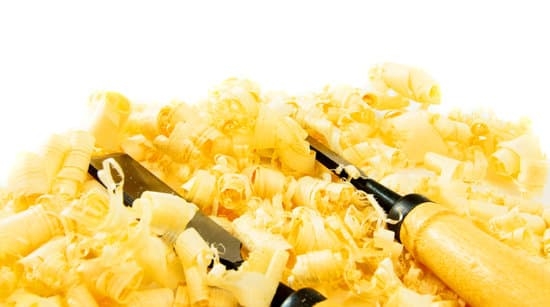What does KD stand for with woodworking lumber? KD stands for Kiln-Dried, which is a crucial process in preparing wood for woodworking projects. Kiln-Drying involves using a heated chamber to reduce the moisture content in the wood, ensuring more stability and durability in the finished product.
In the world of woodworking, moisture content plays a significant role in the quality of the final outcome. Wood that is not properly dried can warp, shrink, or crack over time as it adjusts to its surroundings. This is where Kiln-Drying comes into play as it helps to control and reduce the moisture content of the wood to an optimal level for crafting sturdy and long-lasting pieces.
Understanding how Kiln-Dried wood is produced and its benefits can greatly impact your woodworking projects. By delving into the drying process, identifying KD wood in lumber yards, and storing it properly, you can ensure that your creations are made from high-quality material that will withstand the test of time. Stay tuned as we explore the significance of Kiln-Dried wood and debunk common misconceptions about this essential element in woodworking.
The Importance of Moisture Content in Wood
Moisture content in wood is a critical factor to consider in woodworking projects, and understanding what KD stands for with woodworking lumber is essential. KD stands for Kiln-Dried, a process that involves using a kiln to reduce the moisture content of the wood before it is used for various woodworking applications. Properly dried wood ensures stability and durability in projects, making it a preferred choice among woodworkers.
When working with wood that has not been adequately dried, there is a risk of warping, twisting, or cracking as the moisture content changes over time. Kiln-dried wood helps mitigate these risks by reducing the moisture content to an optimal level, typically around 6-8%. This low moisture content prevents shrinkage or expansion of the wood due to environmental changes, ensuring that your woodworking creations retain their shape and quality for years to come.
In addition to enhancing the structural integrity of your projects, using kiln-dried wood can also improve the overall finish and appearance of your work. With reduced moisture content, the wood is less likely to experience surface blemishes like mold or mildew growth. Furthermore, kiln-dried wood tends to have better dimensional stability, making it easier to cut, shape, and join without encountering issues related to excess moisture.
| Key Advantage | Benefit |
|---|---|
| Improved Stability | Less prone to warping or twisting |
| Enhanced Finish | Reduced risk of surface blemishes |
| Easier Workability | Better dimensional stability for cutting and shaping |
Understanding the Drying Process in Woodworking Lumber
Kiln drying, often abbreviated as KD, is a crucial process in the preparation of woodworking lumber. The drying process involves removing excess moisture from the wood to make it more stable and less prone to warping, twisting, or shrinking. Kiln-dried wood is typically dried to a specific moisture content level suitable for woodworking projects, making it a preferred choice for many woodworkers.
To understand the drying process in woodworking lumber, it is essential to recognize the importance of moisture content in wood. Wood contains natural moisture that needs to be removed before using it for various woodworking applications. Excess moisture can lead to numerous issues such as cracking, splitting, and mold growth in finished projects. Kiln drying helps control and reduce the moisture content of the wood, ensuring optimal performance and longevity of the final product.
During the kiln-drying process, wood is carefully stacked inside a kiln where temperature and humidity levels are controlled. The heat from the kiln helps accelerate the evaporation of moisture from the wood fibers while maintaining a consistent environment to prevent damage. This controlled drying process allows for efficient removal of moisture without compromising the structural integrity of the wood. Ultimately, kiln-dried wood results in a more reliable material for woodworking projects compared to air-dried or untreated lumber.
- Efficiently removes excess moisture
- Prevents warping and shrinking
- Improves stability and durability
Benefits of Kiln-Dried Wood for Woodworking Projects
Kiln-dried wood, often referred to as KD wood, is a crucial element in woodworking projects due to its numerous benefits. When it comes to working with lumber, the moisture content of the wood plays a significant role in the quality and durability of the final product. Kiln-drying is a process that involves using heat and humidity-controlled chambers to remove excess moisture from wood, resulting in a more stable and workable material for woodworking projects.
There are several advantages to using kiln-dried wood for woodworking projects. One of the primary benefits is that kiln-dried wood has a lower moisture content compared to air-dried or green wood.
This reduction in moisture helps prevent issues such as warping, splitting, and shrinkage that can occur when working with wood that has not been properly dried. Additionally, kiln-dried wood tends to be stronger and more resistant to decay, making it an ideal choice for furniture making, cabinetry, and other woodworking applications where strength and stability are essential.
To further highlight the benefits of kiln-dried wood for woodworking projects, here are some key points to consider:
- Improved dimensional stability: Kiln-dried wood is less likely to warp or deform over time.
- Reduced risk of mold and decay: Lower moisture content inhibits the growth of mold and prevents decay.
- Easier machining and finishing: Kiln-dried wood is easier to work with and provides a smoother finish when sanded or painted.
Common Misconceptions About KD Wood
KD Wood Is Low Quality
One common misconception about KD (Kiln-Dried) wood in woodworking is that it is of lesser quality compared to air-dried wood. However, this is not necessarily true. Kiln-dried wood actually offers several benefits for woodworking projects, including more consistent moisture content, reduced risk of warping or twisting, and increased stability. By undergoing the kiln-drying process, the wood becomes more uniform and ready for use in various woodworking applications.
KD Wood Loses Natural Characteristics
Another misconception about KD wood is that it loses its natural characteristics during the drying process. While it is true that some woods may experience slight color changes due to the heat from the kiln, the overall integrity and strength of the wood are preserved. Kiln-dried wood still retains its natural beauty and durability, making it a reliable choice for woodworking projects where both aesthetics and strength are important factors.
KD Wood Is Expensive
There is a belief among some individuals that kiln-dried wood is expensive and not worth the investment when compared to air-dried wood. However, the benefits of using KD wood often outweigh the cost difference.
In fact, by using kiln-dried lumber for your woodworking projects, you can save time during construction due to its stability and reduced risk of defects. Additionally, the long-term durability of kiln-dried wood can result in fewer repairs or replacements over time, making it a cost-effective option in the long run.
How to Identify Kiln-Dried Wood in Lumber Yards
One of the essential aspects of working with woodworking lumber is being able to identify the type of wood you are using. When it comes to KD (Kiln-Dried) wood, there are some key characteristics to look out for.
One way to determine if a piece of wood is kiln-dried is by checking its moisture content. Kiln-dried wood typically has a moisture content ranging from 6% to 8%, making it more stable and less prone to warping or shrinking compared to air-dried wood.
Another method to identify kiln-dried wood in lumber yards is by looking for specific stamps or markings on the wood itself. Many lumber suppliers will mark their kiln-dried products with the letters “KD” or “KDAT” to indicate that the wood has gone through the kiln-drying process. This labeling ensures that customers can easily distinguish between various types of wood and choose the best option for their woodworking projects.
In addition, when visually inspecting lumber in a yard, you can look for signs such as uniform color, absence of mold or mildew, and a smooth texture that are often indicative of kiln-dried wood. By being able to accurately identify kiln-dried wood, you can ensure that your woodworking projects are built with high-quality materials that provide excellent durability and stability over time.
| Characteristic | Indication |
|---|---|
| Moisture Content | Typically 6-8% |
| Markings | “KD” or “KDAT” |
| Visual Inspection | Uniform color, no mold/mildew, smooth texture |
Tips for Properly Storing Kiln-Dried Wood
Properly storing kiln-dried wood is essential to maintain its quality and prevent any issues that may arise from improper storage. Whether you are a professional woodworker or a hobbyist, following these tips can help ensure that your kiln-dried wood stays in optimal condition for your woodworking projects.
Keep the Wood Dry and Protected
One of the most important factors in storing kiln-dried wood is to keep it dry at all times. Moisture can quickly damage the wood and compromise its quality. Make sure to store the wood in a dry, sheltered area such as a garage or shed where it is protected from rain, snow, and humidity. Additionally, placing a tarp over the stacked wood can provide an extra layer of protection against moisture.
Properly Stack the Wood
When stacking kiln-dried wood for storage, it is crucial to do so in a way that allows for proper air circulation. Stacking the wood too tightly can trap moisture and lead to mold growth or warping. Use spacers between each layer of wood to allow air to flow freely around each piece. This will help prevent any moisture buildup and keep the wood in good condition.
Monitor Temperature and Humidity Levels
To ensure that your kiln-dried wood stays in top condition during storage, it is important to monitor temperature and humidity levels regularly. Extreme fluctuations in temperature or high humidity can negatively impact the quality of the wood. Investing in a hygrometer to measure humidity levels and using a dehumidifier if necessary can help create an environment conducive to storing kiln-dried wood properly.
By following these tips for properly storing kiln-dried wood, you can maintain its quality and ensure that it remains in optimal condition for your woodworking projects. Remember that proper storage practices are key to preserving the integrity of the wood and maximizing its potential when used in your creations.
Comparing KD Wood With Air-Dried Wood in Woodworking Projects
When it comes to choosing the right type of wood for your woodworking projects, one common decision that woodworkers face is whether to use kiln-dried (KD) wood or air-dried wood. Understanding the key differences between these two options is essential in ensuring the success and longevity of your projects.
KD lumber, which stands for Kiln-Dried lumber, refers to wood that has undergone a controlled drying process in a kiln to reduce its moisture content to the desired level. The importance of moisture content in wood cannot be underestimated, as excessive moisture can lead to warping, cracking, and mold growth in the finished product. KD wood ensures that the moisture content is carefully controlled, resulting in a stable and reliable material for woodworking projects.
On the other hand, air-dried wood is naturally dried over time by exposure to open air and sunlight. While this method can be cost-effective and environmentally friendly, it lacks the precision and control offered by kiln drying. Air-dried wood may have higher moisture levels compared to KD wood, making it more prone to shrinking or expanding once incorporated into a project.
Conclusion
In conclusion, Kiln-Dried (KD) wood is undoubtedly the preferred choice for woodworkers due to its numerous advantages over air-dried wood. The controlled drying process in a kiln ensures that the moisture content is reduced to the optimal level, resulting in a stable and durable material for woodworking projects.
By eliminating excess moisture, KD wood is less likely to warp, shrink, or crack compared to air-dried wood, making it easier to work with and ensuring the longevity of your creations.
Furthermore, the consistent moisture content in kiln-dried wood minimizes the risk of mold, mildew, and insect infestations, providing a healthier and safer option for woodworking projects. This reliability in quality makes KD wood a valuable investment for both beginners and experienced woodworkers alike. Additionally, by using kiln-dried wood, you can achieve more precise cuts, joinery, and finishes as it allows for better control over the material during construction.
In essence, when it comes to choosing the right type of lumber for your woodworking endeavors, opting for Kiln-Dried wood is a decision that will undoubtedly lead to superior results. By understanding the importance of moisture content in wood, appreciating the benefits of KD lumber in woodworking projects, and knowing how to properly identify and store kiln-dried wood, you can elevate your craftsmanship and create masterpieces that will stand the test of time.
So remember next time you’re at a lumber yard wondering “what does KD stand for with woodworking lumber?” – choose Kiln-Dried for unparalleled quality and performance.
Frequently Asked Questions
What Does KD Mean in Wood?
KD in wood stands for “kiln-dried.” Kiln-drying is a process used to reduce the moisture content of wood before it is used for various applications. This helps prevent warping, shrinking, and other issues that can arise from using wet wood.
What Does KD Mean in Carpentry?
In carpentry, KD refers to the same concept of kiln-dried wood. Carpenters often prefer to use KD wood because it is more stable and less likely to change shape or size after installation. This results in a higher quality finished product.
What Is the Full Form of KD Wood?
The full form of KD wood is “kiln-dried” wood. Kiln drying involves placing the wood in a large oven-like structure where temperature and humidity are carefully controlled to remove excess moisture. This process ensures that the wood is ready for use in construction and woodworking projects.

Hi everyone! I’m a woodworker and blogger, and this is my woodworking blog. In my blog, I share tips and tricks for woodworkers of all skill levels, as well as project ideas that you can try yourself.





